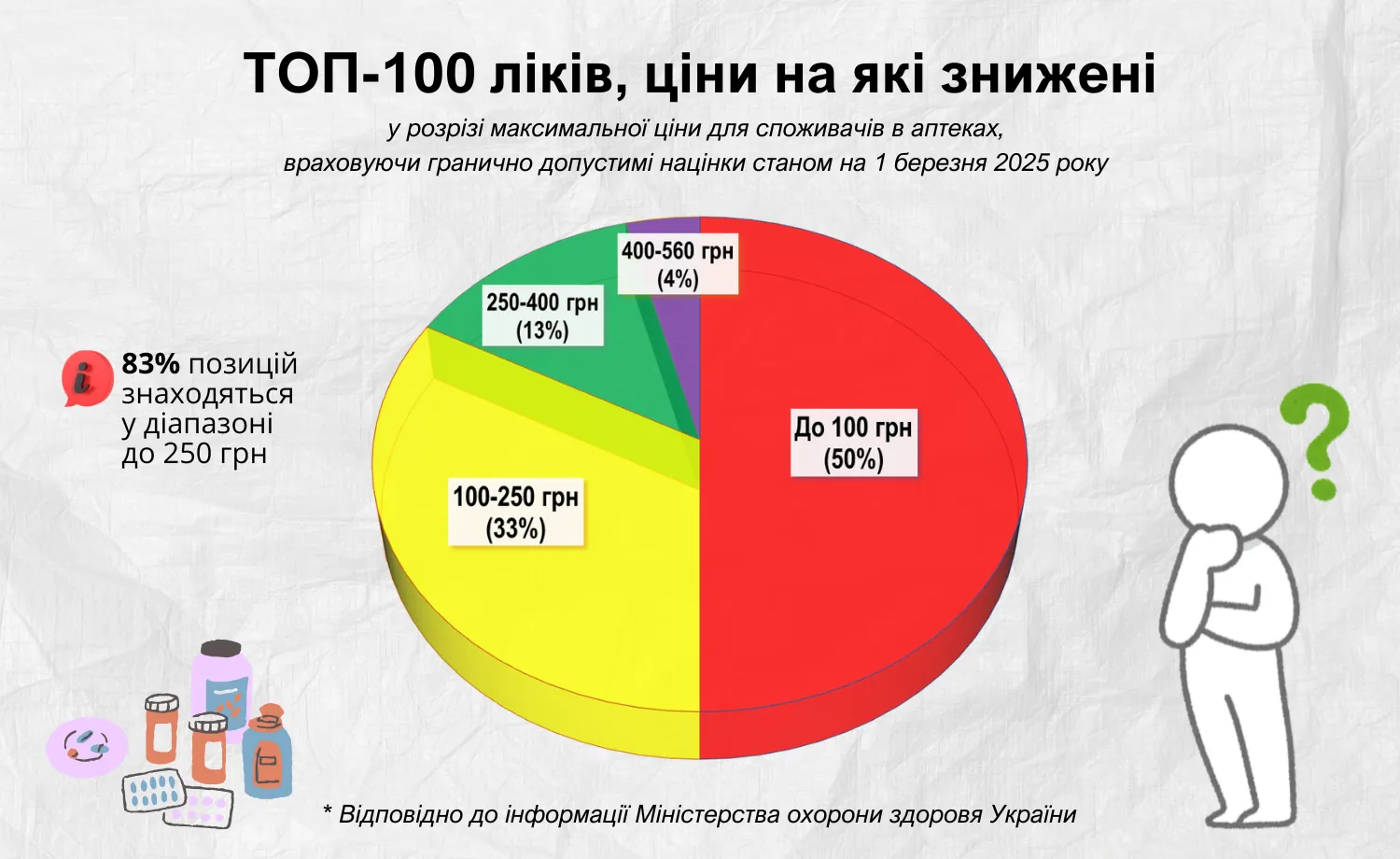Price stabilization of medicines in Ukraine: demonstrative concern or economic illusion?
Kyiv • UNN
Expensive medicines that hit patients' wallets the most were not included in the list of cheaper drugs.

From March 1, 2025, measures to stabilize prices for medicines and medical devices came into force in Ukraine. Domestic pharmaceutical manufacturers signed a declaration on reducing the cost of 100 drugs by 30%. The Ministry of Health published a list of "Top 100" drugs indicating the maximum permissible price in pharmacies (published 101 positions). However, this initiative raises many questions, and in some aspects – outright outrage.
Does the price reduction really concern the most vulnerable patients?
The structure of the new prices shows an ambiguous picture. Half of all drugs that have become cheaper cost up to UAH 100. Another 33% are in the price range of UAH 100-250. Only 13% of drugs are in the range of UAH 250-400, another 4% are in the group of UAH 400-500. That is, 83% of all drugs from the "Top 100" remain in the affordable segment up to UAH 250.

At first glance, this looks like a serious concession for patients. However, the reality is much more complicated. After all, the expensive drugs – those that cost more than UAH 500 – are simply absent from the "golden list". In fact, regulatory measures bypassed the most financially burdensome positions, leaving them outside the scope of "social" care.
"FANIGAN" – the most expensive, but not the market record holder
The most expensive in the "Top 100" list was the drug "FANIGAN, tablets, #100" from LLC "KUSUM PHARM", which costs UAH 556.13. However, even this drug is an exception among the cheaper drugs, because most of the items on the list do not exceed UAH 400.
This raises a legitimate question: are the measures of the Ministry of Health really aimed at supporting socially vulnerable segments of the population? After all, the real "blows" to patients' wallets are caused by completely different drugs – those that are not included in the list.
Conclusions: are the changes practical or cosmetic?
Price stabilization looks more like a media stunt than a real breakthrough in ensuring access to medicines. Reducing the cost of relatively inexpensive drugs does not solve the key problem – the inaccessibility of vital expensive drugs.
Without revising pricing for high-cost drugs and a comprehensive strategy for state regulation of the pharmaceutical market, such initiatives may remain only political PR, and not a real improvement for patients. Therefore, the question remains open: who really benefits from this reform?